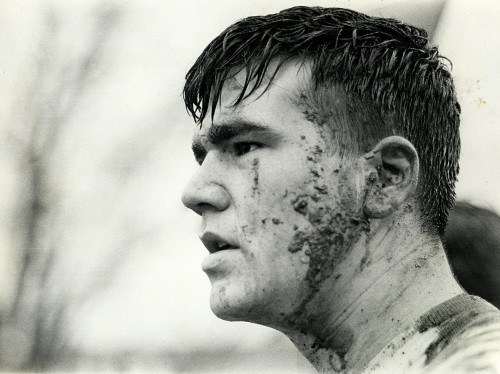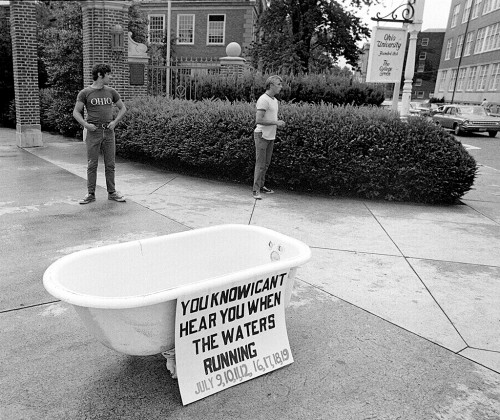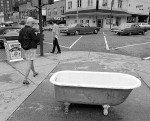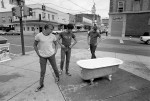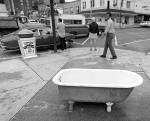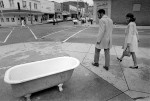When Road Warriorettes Anne and Jessica journeyed to Florida last May, we left Athens, Ohio, passed through places like Albany, Georgia, and Athens, Georgia until we got to the Sunshine state.
It was getting late, and my passengers had, in addition to the Ohio and Georgia towns, gone through Whiny, Grumpy, Cross City and were approaching Armed Insurrection before we got something to eat and stayed overnight in Chiefland. They were in a better mood the next morning when we checked out the Levy County Quilt Museum.
Talked it up to Warriorette Shari
 When it came time to haul Warriorette Shari back to Missouri, I talked up this great old restaurant in Chiefland that had the quilt museum and some inexpensive lodging nearby.
When it came time to haul Warriorette Shari back to Missouri, I talked up this great old restaurant in Chiefland that had the quilt museum and some inexpensive lodging nearby.
By the time we got to the general area of those cool places, it was dark. Even though we were northbound, we were beginning to get close to Whiny and Grumpy. Cranky and Hungry were far behind us. When the lights of Chiefland came and went with no restaurant, my passenger started to get concerned. “‘When you said you were a cereal killer, you WERE talking about Cheerios, right?”
Just about the time I was beginning to doubt myself, the Citrus Inn Restaurant appeared out of the darkness. I was right about stopping in Chiefland for the night on our last trip, but we had EATEN at Cross City.
We pulled into the lot afraid that it would be closed, but an EMT opened the door for us, and we saw two guys sitting together, some folks paying their bill, and another fellow sitting at a table near where we were going to wind up.
Huge oysters in the stew
I ordered the oyster stew (with two spoons, because I’m a nice guy), and a shrimp and oyster combo. Shari had a seafood combo with scallops and something else. It was a good thing I had asked for two spoons. The stew came in a bowl the size of a small bathtub, and half a cow of butter was floating on top of it. There were at least eight or 10 HUGE oysters hiding under the butter. These weren’t oyster chunks, they were slurping-size bivalve molluscs to be proud of.
Unlike Road Warriorette Jan, who is a foodie by trade, my first instinct is to chow down, not to take pictures of my food. That’s why there are pieces missing from our plates.
“I’m going to hurt myself”
When I got to the “if I eat one more bite, I’m going to hurt myself” stage, the guy who had been sitting across from us got up to leave. Catching his eye, I said, “We’ve got way more shrimp, scallops and oysters than we can finish, and we’re on the road, so we can’t take them with us. Would you like some of them?”
The guy patted his stomach, then said, “Thanks, but I’m almost in the same shape. I don’t think I could eat another bite. ” Then, before he could take another two steps, he turned around and said, “I’ve changed my mind. I’ve never tried the oysters. I’ll take a couple.”
We made the same offer to the two other customers. They considered it, but ended up passing.
The Citrus Inn Restaurant, established in 1928 (I think), is the kind of place where you could have those kinds of conversations with perfect strangers and not feel at all uncomfortable. I ate there in the middle 70s while covering a Suwanee River flood. It’s going to be one of my regular stops when I’m taking Hwy 19 through the middle of the state.


